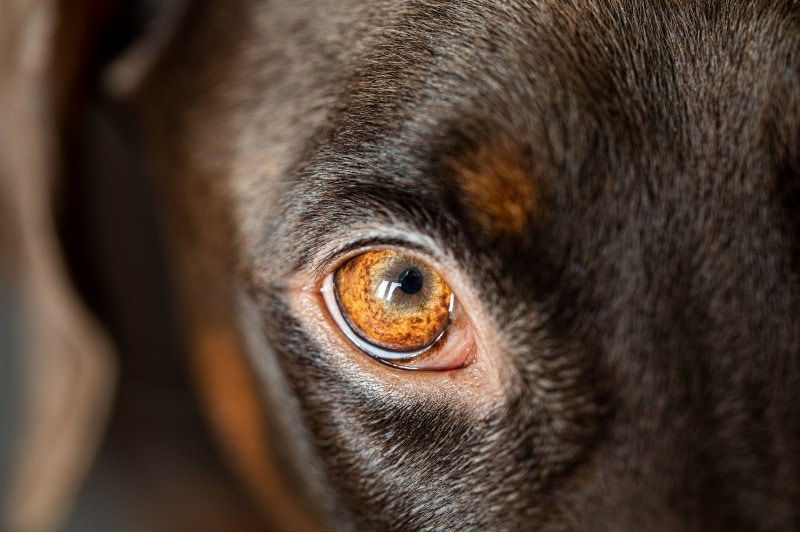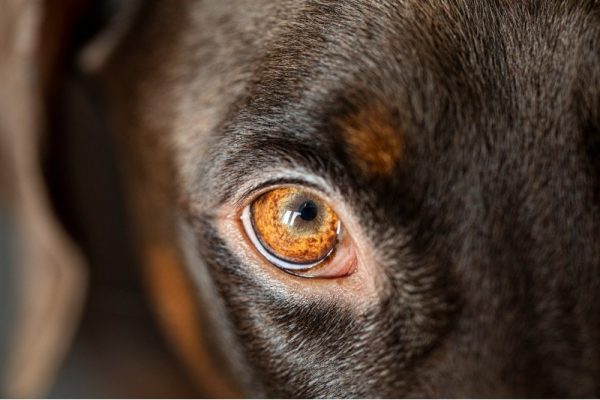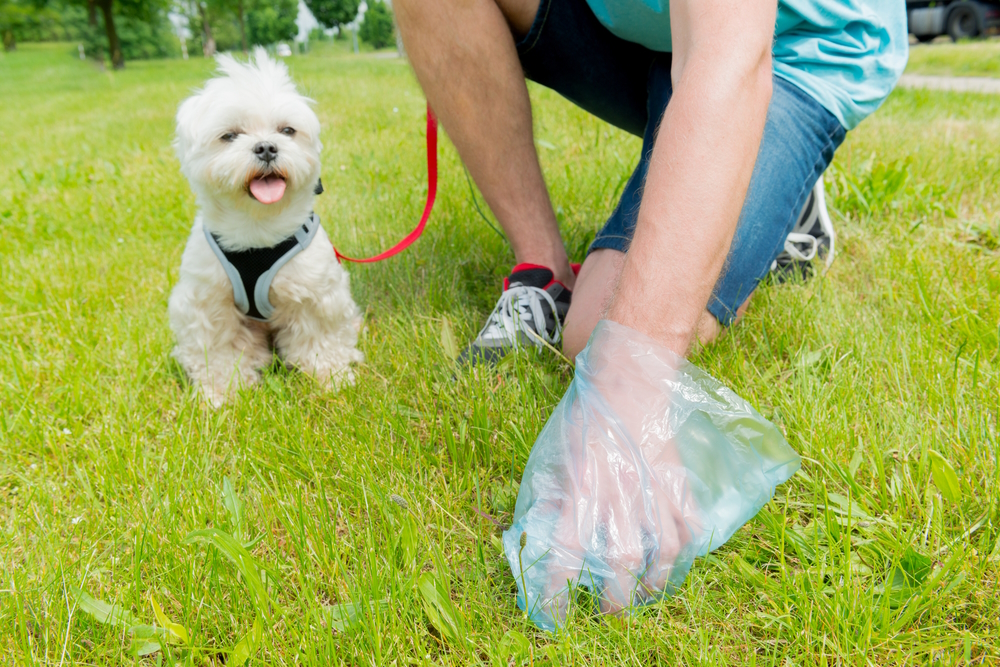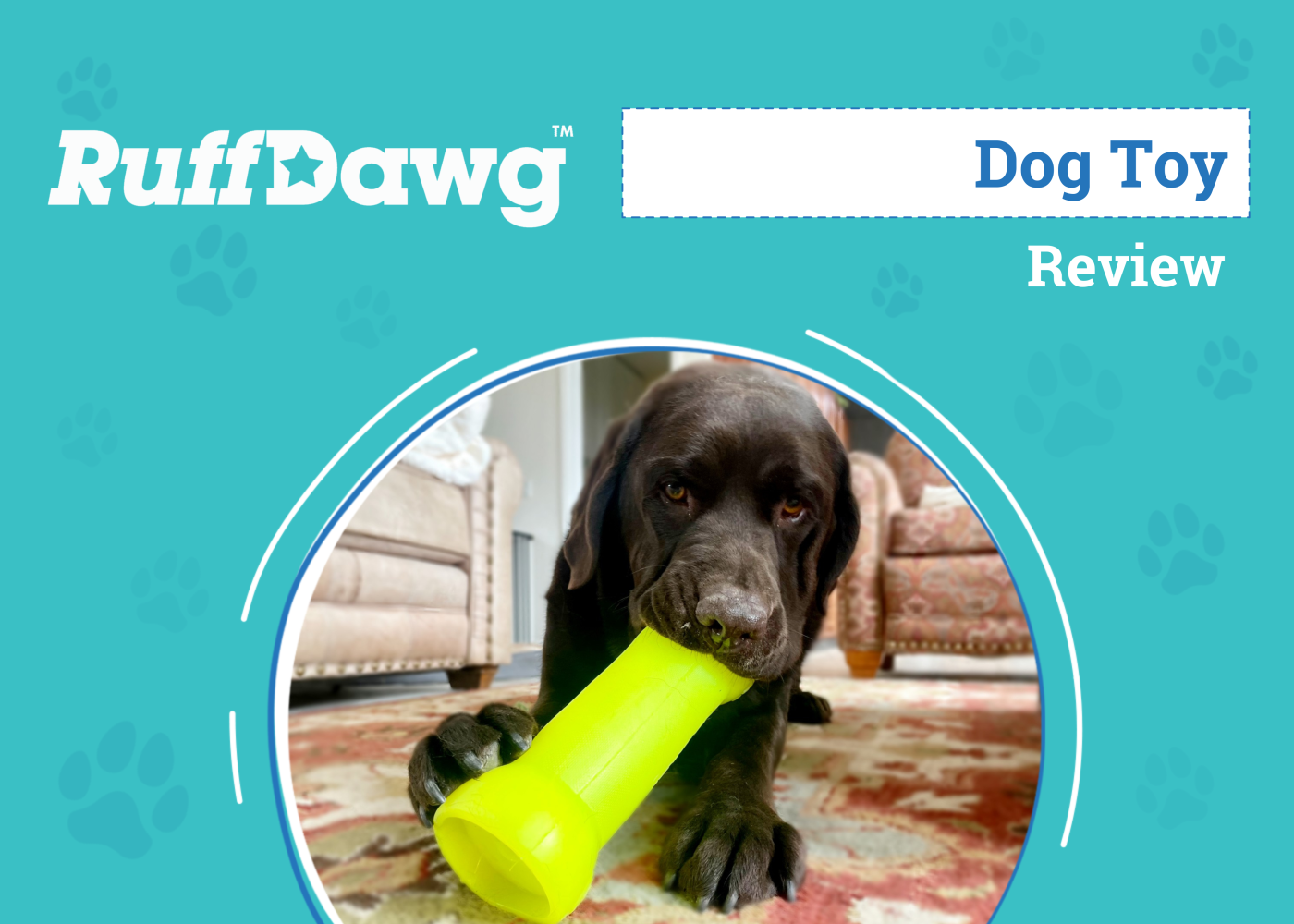Humans have two eyelids per eye—the upper and lower eyelids. Your dog appears to have two eyelids per eye, but there’s actually a third one that’s hidden from view. So, how many eyelids do dogs have? They have three eyelids per eye.
If you’ve ever seen your dog deeply sleeping, you may have noticed a pink triangular membrane in the inner corner peeking through the external eyelids. This is known as the nictitating membrane or “third eyelid”.
What Is the Third Eyelid?
The third eyelid is found at the inside corner of the eyes in dogs and other canines, felines, and other animals. It’s a triangular membrane of conjunctival tissue that covers the surface of the eye to provide protection. The third eyelid also has one of the most important tear glands at its base.
While all dog breeds have a nictitating membrane, they could vary in their appearance. Some are very pale or quite dark, but most are pink.
- Protecting the eye from injury
- Keeping the cornea clean and lubricated by spreading tears
- Producing immunoglobulins to protect against infection
- Producing tears
In wild animals, the third eyelid is an important feature that keeps the eye safe from injury, dirt, or infection—risks that these animals encounter regularly. Though dogs live a comparatively cushy life, they still risk injury or infection to their eyes from daily activity.
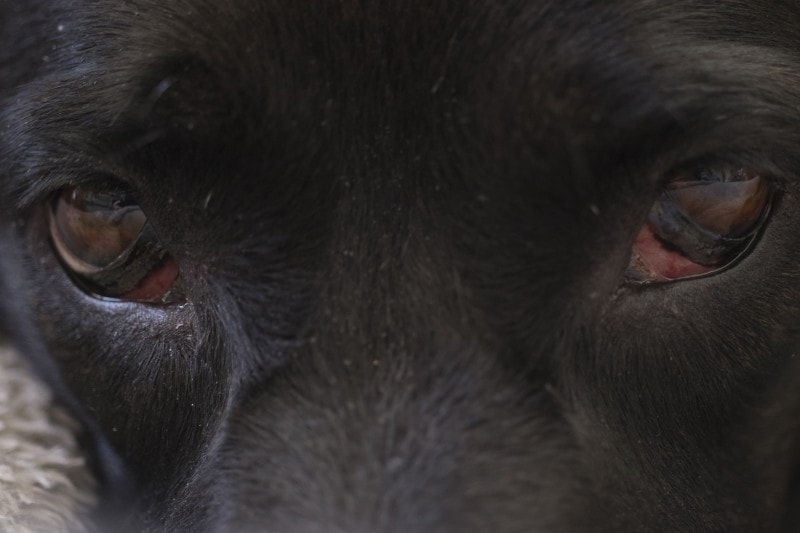
Conditions of the Third Eyelid
Though you may not see the third eyelid often, it can develop conditions that are separate from the other eyelids:
- Cherry Eye
- Cartilage Eversion
Cherry Eye
The most common third eyelid condition is “cherry eye,” or prolapse of the third eyelid gland from its normal position. When this occurs, the eyelid looks like a smooth pink or reddish mass above the edge of the third eyelid. It can happen in one eye or both, simultaneously or at different times.
Cherry eye often becomes obvious when it’s a red, swollen mass, which resembles a cherry. It could be large and may cover a portion of the cornea, or it may be small and only visible some of the time.
This can occur when the fibrous attachment that anchors the gland of the third eyelid is weak, allowing the gland to prolapse easily. Several breeds are prone to cherry eye, including Bulldogs, Boston Terriers, Beagles, Lhasa Apsos, Shih Tzus, Cocker Spaniels, and Bloodhounds. It can also occur in brachycephalic breeds of both dogs and cats or the breeds with a “squished face” look.
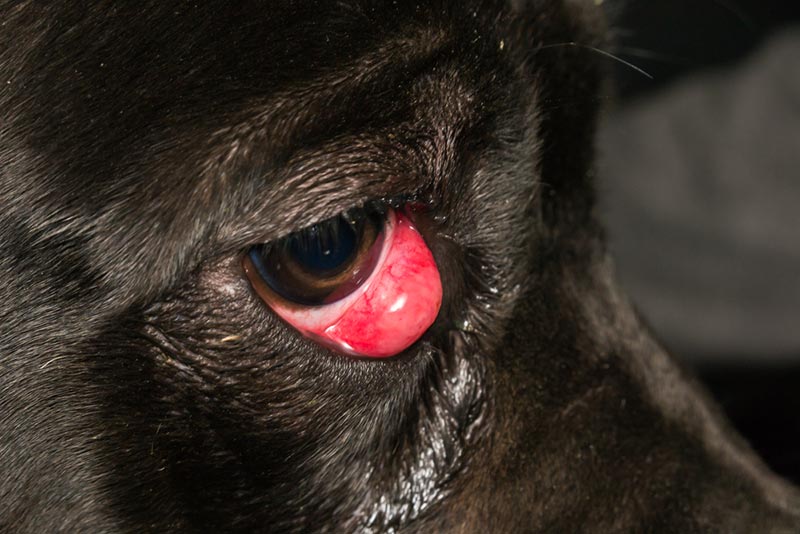
Cartilage Eversion
Cartilage eversion, or scrolled cartilage, is less common than cherry eye and tends to affect larger dog breeds. The third eyelid has T-shaped cartilage inside it, which helps it hold its shape. In younger giant breeds, the T area can grow quickly, leading the cartilage to become bent, averted, or scrolled.
When this happens, the third eyelid is “rolled up” and looks like a pink or reddish mass in the corner of the eye. This can look similar to cherry eye, so it may require a thorough examination to distinguish between the two.
How Are These Conditions Treated?
A poorly functioning nictitating membrane and an everted gland leave a dog’s eye at risk of dryness, itchiness, and discomfort. Repeated rubbing and scratching at the membrane can cause other eye injuries, such as corneal ulcers.
With both cherry eye and cartilage aversion, the recommended treatment is surgery. For cherry eye, the gland is returned to its normal position at the base of the third eyelid to ensure it keeps functioning, while cartilage aversion is treated by dissecting the cartilage excess and removing it. The prognosis is good for both conditions with surgery.
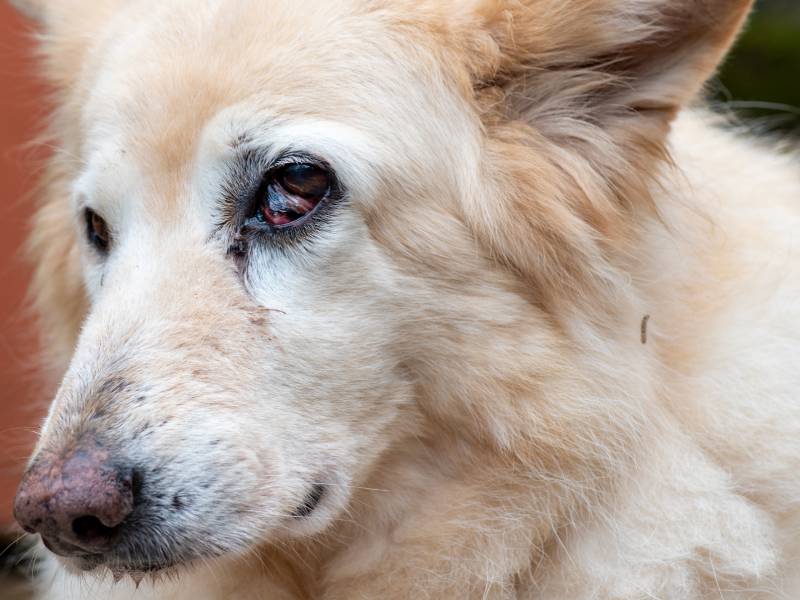
Final Thoughts
Though we may not see them often, dogs have three eyelids that are essential to the health of their eyes. In addition to the upper and lower eyelids, we can see all the time, dogs have a third eyelid that’s hidden in their inner corner. Because some conditions can affect the third eyelid and risk your dog’s eye health, it’s important to pay attention to your dog’s third eyelid and visit a vet if anything looks strange.
Featured Image Credit: Sabrinasfotos, Pixabay

